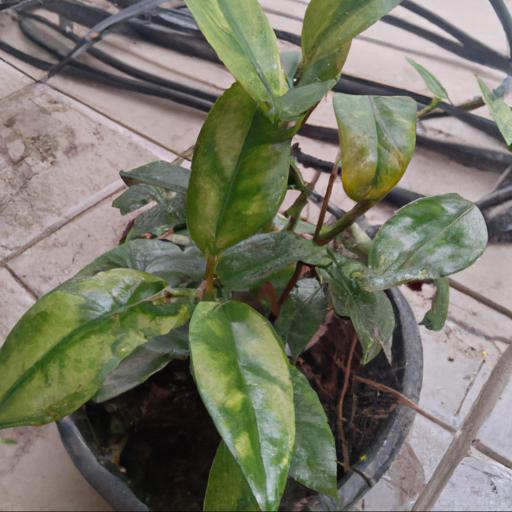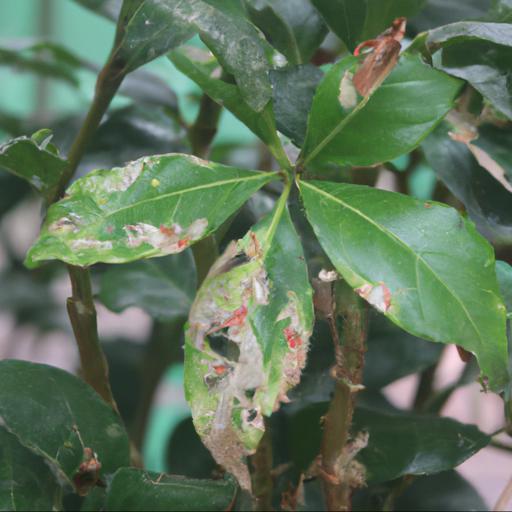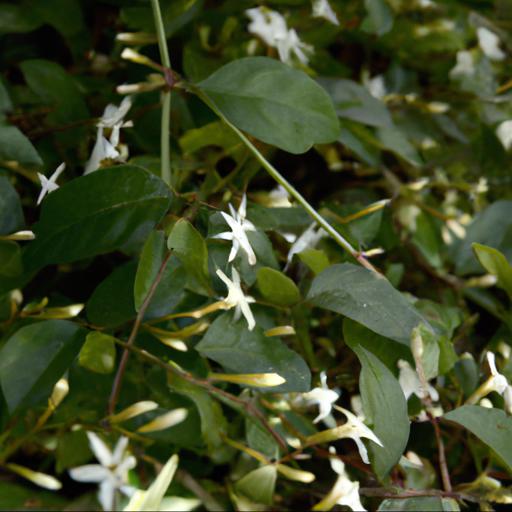Trachelospermum asiaticum, commonly known as Asian Jasmine, is an evergreen, woody twining vine that is native to Southeast Asia. Its fragrant white flowers and glossy, leathery green leaves make it an attractive addition to gardens and landscapes. This hardy, fast-growing vine is easy to care for and can be used to create a beautiful, lush groundcover, or to cover walls and fences.
In this blog, we will discuss the benefits of growing Trachelospermum asiaticum, as well as how to care for it and the best ways to use it in your garden.
Benefits of growing trachelospermum asiaticum
Gardening enthusiasts are becoming increasingly enamored with Trachelospermum asiaticum, commonly referred to as Star Jasmine. This hardy, evergreen, twining climber offers several benefits for all kinds of gardens. First of all, thanks to its rapid growth and dense foliage, Star Jasmine is an effective way of creating a green wall or screen – an ideal way to block out the view of unwanted neighbors or hide unattractive walls and garden sheds.
What’s more, this beautiful climber has two-tone leaves which, when backlit by the sun, bring movement and interest to any part of the garden. On top of that, the sweetly scented white jasmine blooms, which appear during summer and again in autumn, bring an air of natural elegance and beauty to any garden.
Furthermore, the flowers of Trachelospermum asiaticum are highly attractive to pollinators, helping to encourage them into the garden. Growing Star Jasmine is generally easy; plants can be propagated via cuttings, and it’s also said to be a good choice for pots and hanging baskets where the twining habit can be fully appreciated.
A vigorous climber, it’s capable of reaching heights of up to 8 metres, so it’s best to provide plenty of space if you’re thinking of planting it. As with all plants, Trachelospermum asiaticum must be given the right conditions and not too much water, but with a little bit of attention and care, you’ll be able to enjoy the numerous benefits of this incredible climber for years to come.
Tips for planting and caring for trachelospermum asiaticum

Gardening enthusiasts looking for an attractive, fragrant addition to their outdoor space need to look no further than Trachelospermum asiaticum. A member of the Apocynaceae family and native to southern Asia, this hardy evergreen climber is known for its glossy green foliage and its white or pink, star-shaped flowers that emit a delicate pungent scent.
Planting and caring for Trachelospermum asiaticum can be a rewarding experience, with a well-maintained specimen providing a stunning backdrop to any outdoor oasis. When planting Trachelospermum asiaticum, look for a sunny, sheltered spot. This plant likes to be in full sun to partial shade, with well-draining soil and plenty of space to climb.
If planting against a wall or other structure, drive support stakes into the ground to attach the climber to. Planting in containers is also an option; for best results, use a well-aerated potting soil and 4-inch pots with drainage holes. Once transplanted, thin the foliage for light and air circulation, and water regularly so the soil does not dry out.
During its growing season, Trachelospermum asiaticum will benefit from occasional feeding. Slow-release fertilizer pellets or liquid fertilizer should be applied to the soil in the spring or early summer, or a water-soluble fertilizer can be given monthly.
To keep the climber healthy, prune it back once a year. Trim stray branches and cut back any dead or dying flowers, and make sure the stems are kept strong and secure in their supports. With proper care and attention, Trachelospermum asiaticum will reward even the novice gardener with a lush, fragrant display for years to come.
Common pests and diseases of trachelospermum asiaticum

Trachelospermum asiaticum, commonly referred to as star jasmine, is a unique member of the jasmine family with lush foliage and fragrant vibrant white flowers. It is native to Japan, and its trailing vines can be grown for years not only as an ornamental plant in the garden, but also as a part of a garden’s landscape architecture. While star jasmine can add aesthetic beauty to a garden, due to its easy maintenance and hardiness, it is subject to pests and diseases if not properly cared for.
Common pests that plague star jasmine include aphids, scale, mealybugs, and spider mites. Aphids, scale and mealybugs feed on the plant’s sap, robbing it of necessary nutrition.
They can easily be controlled with insecticidal soap or insecticides, such as malathion. Spider mites are especially hard to detect and may have to be treated with a chemical control. Various fungal diseases can also affect star jasmine.
Leaf spots and blights caused by pathogens such as Alternaria and Cercospora can cause discoloration and wilting of the foliage. In order to control such diseases, fallen leaves should be regularly removed and pruning of infected parts of the plant can reduce their spread.
In serious cases, fungicides can be used. It is important to pay attention to star jasmine and keep it well maintained to prevent it from being affected by pests and diseases. Proper watering, mulching and use of nutritive fertilizers can go a long way in keeping this plant healthy and abundant in the garden.
Final Touch
Trachelospermum asiaticum, commonly known as Asian Jasmine, is an evergreen, woody, twining vine native to East Asia. It is an excellent groundcover or climber for sunny areas, and its fragrant white flowers bloom from late spring to early summer.
Its glossy green leaves make it an attractive addition to any garden. This hardy plant is tolerant of a wide range of soil conditions and is easy to maintain. It can be used to create a lush, fragrant landscape or can be trained to climb walls, trellises, or arbors for a unique look.
FAQ
What is the scientific name of Trachelospermum asiaticum?
The scientific name of Trachelospermum asiaticum is Trachelospermum jasminoides.
What are the common names of Trachelospermum asiaticum?
The common names of Trachelospermum asiaticum are Chinese Star Jasmine, Confederate Jasmine, and Star Jasmine.
Where is Trachelospermum asiaticum native to?
Trachelospermum asiaticum is native to Southeast Asia, including China, Japan, Korea, and Vietnam.
What are the characteristics of Trachelospermum asiaticum?
Trachelospermum asiaticum is a vining evergreen plant with glossy, dark green leaves and fragrant white flowers. It is an excellent choice for trellises, arbors, and other structures, as it is a fast-growing, hardy plant. It is also drought-tolerant and can tolerate a wide range of soil types. The flowers are followed by small, round, black berries.
How is Trachelospermum asiaticum propagated?
Trachelospermum asiaticum is propagated by stem cuttings or division of the root ball.
What are the uses of Trachelospermum asiaticum?
Trachelospermum asiaticum is a popular ornamental plant that is used in gardens and landscapes. It is also used medicinally to treat skin conditions, such as eczema, and as an antiseptic. Additionally, it is used in traditional Chinese medicine to treat a variety of ailments, including fever, headaches, and digestive issues.

